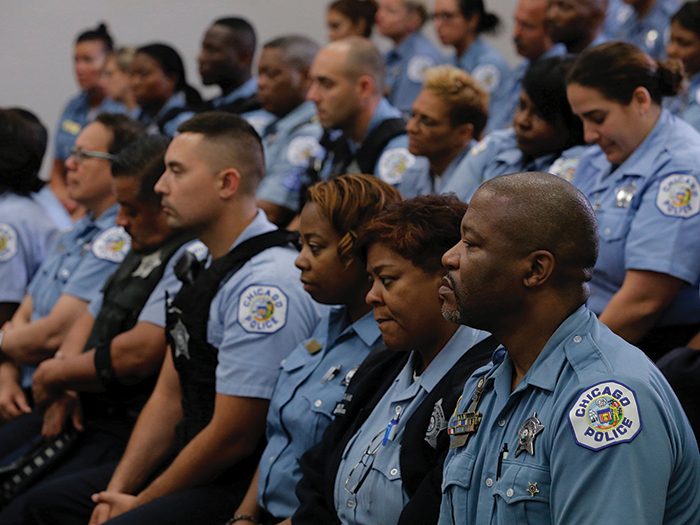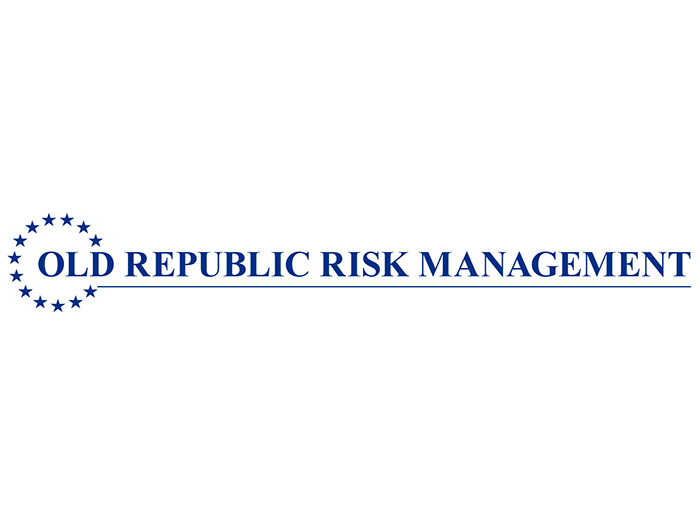Public Sector Risk
For Less Police Violence, Train More

In the emotionally and politically charged climate surrounding police violence, a consensus emerges from the right and the left, from cops, attorneys, academics and the insurance community: Mitigation depends on more and better training for law enforcement.
Every stakeholder — from the cop on the beat through prison management and the insurance industry — has a role in affecting change.
“Sometimes police have to use force, and then bad things happen,” said Greg Champagne, a sheriff in St. Charles Parish, Louisiana, and president of the National Sheriff’s Association. “The best risk management is the best training a police force can afford. Insurers can help us provide free training.”
Communities are feeling the financial impact of police training. Bloomberg reported in February 2016 that spending on police training in 23 of the 25 biggest U.S. cities grew 17 percent to $317.9 million in 2015 from 2013.
The cost of not training may be even higher. For example, Chicago residents paid nearly half a billion dollars in settlements over the past decade, according to the Chicago Sun-Times, and spent $84.6 million in fees, settlements and awards in 2013.
Costs fall primarily on taxpayers, since most large cities are self-insured. Many smaller cities belong to self-insured risk pools.
Fewer than five insurers cover public entities nationally, said Scott K. Thomason, vice president, public sector, at Arthur J. Gallagher & Co., but the self-insured cities rely on reinsurers, which have a vested interest in improving risk profiles.
“Civil unrest is not created equal, in likelihood and severity,” said Hart S. Brown, senior vice president, organizational resilience, HUB International. For example, riot-type events explode with high energy and emotion but usually dissipate within 72 hours. Labor unrest may last longer but has less geographical impact.
“Carriers and brokers can conduct real risk assessments of the kind of event that’s likely and its cost to municipalities.” Brown said.
Many experts believe that a disproportionate number of claims are caused by a small number of officers, said John Rappaport, assistant professor of law, University of Chicago School of Law.
Insurers “could be bolder” in urging departments to get rid of the bad apples, he said. While carriers don’t want to be perceived as interfering in personnel matters, he said, “this is an occasion for managing risk.”
Training, Training and More Training
In April, the National Association of Black Law Enforcement Officers Inc. (NABLEO) conducted a two-day de-escalation training program. The curriculum aims to unpack “implicit bias,” which the Justice Department defines as “the unconscious or subtle associations that individuals make between groups of people and stereotypes about those groups.”
“Our assumptions of who other people are dictate how we treat them,” said Charles P. Wilson, national chairman at NABLEO. “Assumptions create risk.”
Training aims to change the attitudes and behaviors that can erupt into violence. “How does the officer perceive the other person? How is he speaking to him? What kind of words is he using? How does he interpret body language? How does his cultural lens affect what he sees?”
Implicit bias training is part of the reform in some of the consent decrees the Justice Department reached under the Obama Administration with several troubled police departments.
The current attorney general, Jeff Sessions, is seeking a review of the consent decrees, citing concerns about their overuse and potential stigma for the police departments.
The DOJ action is “a disservice to law enforcement and the community,” Wilson said. “Police have to understand what they’re doing wrong so they can stop doing it.”
The Fraternal Order of Police, which vociferously supports Sessions on its website, may disagree.
“Sometimes police have to use force, and then bad things happen.” —Greg Champagne, president, National Sheriff’s Association
Regardless, said Rappaport, if consent decrees were abandoned, affected municipalities could see more violent interactions and lawsuits to follow. Most of these cities are self-insured, so only their excess carriers might be affected.
And if federal funding for de-escalation and other training were withdrawn, would the insurance industry have a role in picking up the tab?
“Absolutely,” Rappaport said. “Carriers can do the calculations: Do we expect to save more on claims and lawsuits than we spend on training? Research suggests they will.”
Police liability insurers — many of which are non-competitive, state-specific municipal risk pools — are an important “bumblebee” in cross-pollinating best practices, he said.
Just as carriers share positive results about telematics devices installed in police cars, revealing location, speed and response times, they also share technology and training success stories.
The need for thorough training runs the entire law enforcement and judicial gamut, said Champagne.
“Use of force, medical care, automobile crashes — those are the liability triggers. Sheriffs run jails, and they and their deputies have to understand the law and procedures in their operations,” he said.
Body Cameras, Pros and Cons
With some reservations, body cameras attached to police officers’ shirts are almost universally hailed by police organizations, insurers, academics and even the ACLU.
Some insurers offer grant funding to municipalities to help finance the equipment, said Derek Broaddus, senior vice president at Allied World Insurance, a specialist primary and excess carrier.
Others offer grant-writing training to help put the funds within smaller municipalities’ reach.
The pros? “Body cameras can raise the level of officers’ responsibility because they know they’re being recorded,” said Thomason. They can also influence the behavior of the person on the other side of the lens.
The cons? At $400 to $1,000 apiece, they’re expensive, said Kenny Smith, risk control manager at OneBeacon.
“And then you have the cost of storage, retrieving images, copying and redaction when someone requests them through the Freedom of Information Act,” he said.
“Cameras alone may be prohibitively expensive for an entire police department,” said Brown, “and storage is expensive, whether on a municipality’s own servers or on the cloud.”
Taser International — now Axon — announced in April a program to equip every U.S. police officer with a free body camera and provide police departments with supporting hardware, software, data storage and training, free for one year. After a year, cameras would cost $399 and use of the company’s Evidence.com platform $15 to $89 per month, per officer.
“The image that appears on the evening news can look awful, but it doesn’t show the run-up to the incident,” Broaddus said. “It doesn’t show the pre-arrest history between the participants, the altercation or instigation.”
“When you don’t have the full scope of context, it creates more risk,” said Thomason.
Video footage can stir up negative public perception, Smith said.
“Once it’s released to the public or the media, it can be very damaging. Police departments need to have their procedural ducks in a row before they venture into this thing.” &












